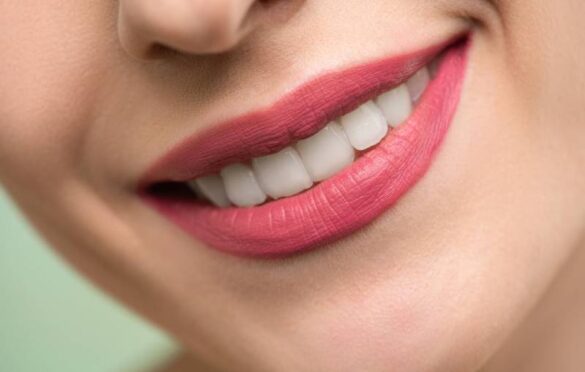Tooth Discolouration- Definition, Causes, Prevention, Treatment

Table of Contents
What is Tooth Discolouration?
Tooth Discolouration is when the colour of your teeth changes. They don’t look as positive or white as they should. Your teeth may darken, change from white to different colours, or develop white or dark spots in places.
Reasons for Tooth Discolouration can be:
Extrinsic, which means that it caused by something that comes in contact with your teeth
Intrinsic, which means that it caused by something in your teeth or your body
Age-related – happens later in life
Causes of tooth discolouration
There are several Causes for Tooth Discolouration, Including:
Food and drinks. Coffee, tea, cola, wines, and certain fruits and vegetables (e.g. apples and potatoes) can stain your teeth.
Tobacco use. Smoking or chewing tobacco can stain teeth.
Bad dental hygiene. Not brushing enough, flossing, and rinsing to remove plaque and staining substances.
Sickness: Various diseases that affect tooth enamel (the hard surface of teeth) and dentin (the underlying material beneath tooth enamel) can cause tooth discolouration. Actions for certain circumstances can also have an impact on tooth colour. Head and neck radiation and chemotherapy can source tooth discolouration. In addition, specific toxicities in pregnant mothers can cause tooth discolouration in their babies by affecting enamel development.
Medication: The antibiotics tetracycline and doxycycline are known to stain teeth when given to children whose teeth are still developing (before the age of 8). Mouth rinses and washes that contain chlorhexidine and cetylpyridinium chloride can also stain teeth. Antihistamines (such as Benadryl), antipsychotics, and medicines for high blood pressure also cause tooth discolouration.
Dental materials. Some of the materials used in dentistry, such as amalgam restorations, especially materials containing silver sulfide, can stain teeth grey-black.
Ageing. As you age, the outer enamel layer of your teeth wears off and reveals the natural colour of the dentin. Genetics. Some people have lighter or thicker enamel than others.
Surroundings: Excessive fluoride from either environmental sources (naturally high levels of fluoride in the water) or excessive use (fluoride applications, rinses, toothpaste, and fluoride supplements taken orally) can stain teeth.
Trauma: Damage from a fall can disrupt coating formation in young children whose teeth are still developing. Trauma can also lead to discolouration of adult teeth.
Discolouration of Teeth Caused by Colour
How the colour of your Teeth is changing can help identify the source:
Yellow. As you age, the white coating surface of your teeth may dress down. The yellow core of your teeth develops more visible.
Brown: Tobacco, dark drinks like tea or coffee, and bad brushing habits that lead to tooth decay can cause your teeth to go brunet.
White: As young teeth grow, too much fluoride can source white spots. This call fluorosis occurs when teeth come in contact with too much fluoride from drinking water or excessive fluoride rinses or toothpaste.
Tooth decay or necrosis of the dental pulp can make your teeth greyish or black. Chewing betel nuts can also make your teeth black. Exposure to raw materials like iron, manganese, or silver in industrial environments or from any supplement can create a black line on your teeth.
Mauve: Red wine can stain your tooth enamel, the colour of your drink.
Prevention of Discolouration of Teeth
If your teeth have stains that keep you from smiling, fight back. You have many ways to brighten them up and prevent the shine from fading.
Stuff you eat or drink that can leave marks on your hands or clothes can stain your helicopters as well. It is why it’s a good idea to brush or rinse your mouth after you’ve enjoyed it. Some of the stain makers to look out for include:
coffee or tea
sparkling water
Red and white wine
Grape or cranberry juice
Blueberries
Beets
soy sauce
Tomato sauce
Also Read: Prevention of Bad Breath in a Child
Some other Lifestyle changes can help Prevent Tooth Discolouration:
If you are a coffee drinker or a smoker, consider cutting or quitting.
Drink with a straw. It can help keep stains away from drinking soda, juice, iced coffee, or tea. The fluid does not get near the observable front sides of false teeth.
Improve your dental hygiene by brushing, flossing, and using an antibacterial mouthwash every day. All three can help fight plaque, a white, hard material that builds up on your teeth. It creates them sticky and gives stains something to hold.
Have a dentist cleans your teeth every six months. It keeps your mouth healthy and gives you a bright smile.
If the color of your teeth changes without explanation and there are other symptoms, make an appointment with your dentist.
Teeth Discolouration Treatments
Treatment options for teeth whitening may vary depending on the cause of the discoloration and may include:
Use of teeth brushing and dental flossing techniques
Avoiding foods and drinks that cause stains
Use of over-the-counter bleaching agents. They are able to make your teeth sensitive, but this side effect usually goes away after the whitening period is over. If your gums are irritated, talk to your dentist.
At-home Whitening Agents Purchased from your Dentist
In-office whitening procedures. If you whiten your teeth at your dentist’s office, it may require one or more visits. They will put a shielding gel or rubber shield on your gums and then apply a whitening agent to your teeth. They can also make a custom tray that you can use at home with a whitening gel.
Collage: A dentist or prosthodontist fuses the material with the stained areas of your teeth to change their color or shape.
Veneers: A dentist or prosthodontist places a thin shell of material all the front of your tooth to change the color or shape.


